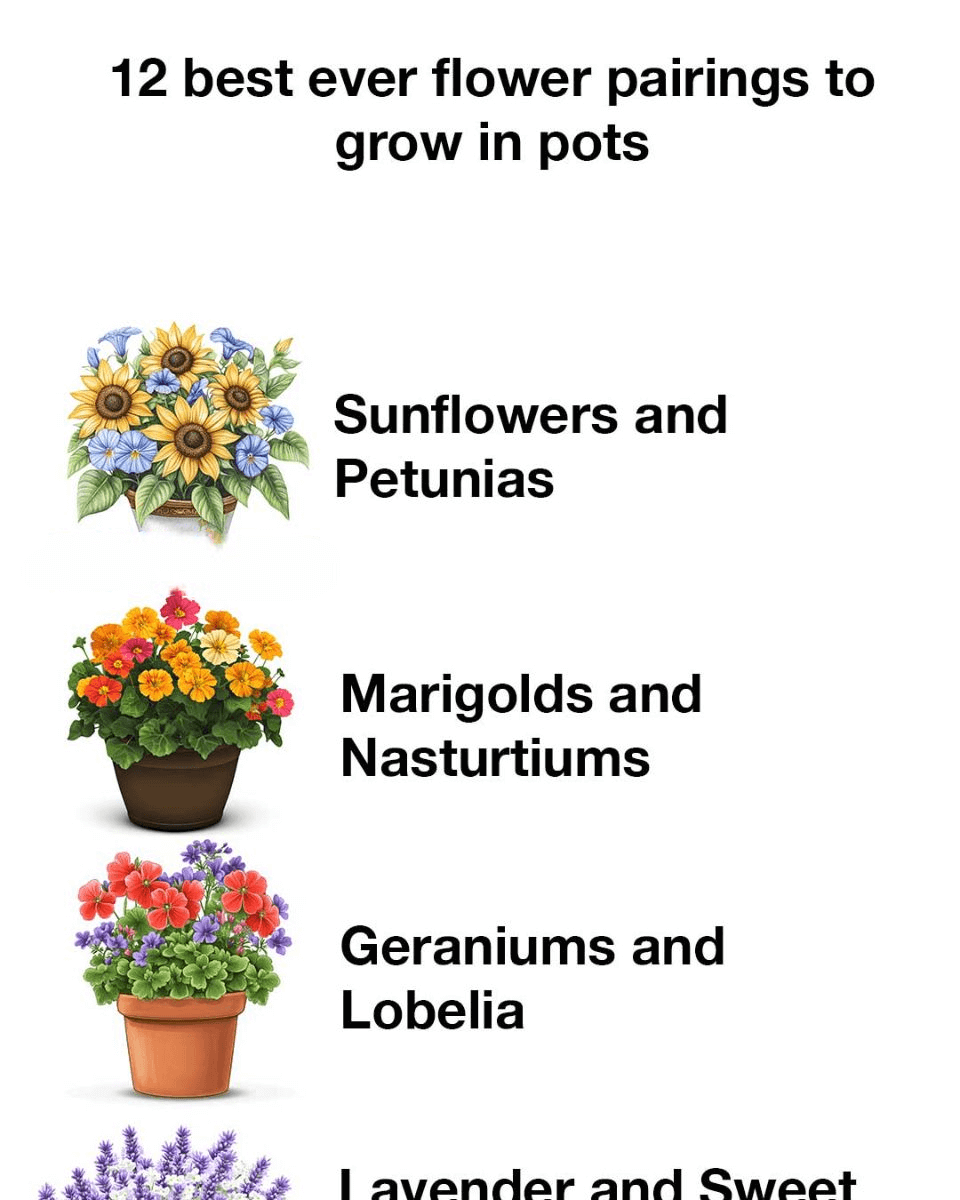Pairing flowers in pots is a fantastic way to bring charm and vibrance to small spaces, whether it’s a balcony, patio, or garden corner. When you combine the right flowers, the results can be visually stunning, with long-lasting blooms and textures that play off each other beautifully. Successful flower pairings come down to choosing plants with similar care needs and complementary aesthetics. In this guide, you’ll discover 12 of the best flower pairings that thrive in containers—offering not only beauty but also practical benefits.
Why Grow Flower Combos in Pots?
Arranging flower pairs in containers has many advantages. For starters, pots give you more control over growing conditions like soil quality, drainage, and sun exposure. This is especially helpful for gardeners working with limited or non-traditional spaces. Potted arrangements can also be moved around to catch the best light or shelter plants from harsh weather. Plus, certain combinations can attract pollinators like bees and butterflies or help ward off pests. Best of all, flower pairings add a dynamic and colorful display that enhances any indoor or outdoor setting.
Picking the Perfect Pot
The container you choose plays a key role in your flowers’ success. Make sure it’s large enough to accommodate mature plants without crowding. Good drainage is essential—look for pots with holes at the bottom to prevent soggy roots. Also, consider the pot’s material. Terracotta, ceramic, and plastic all have different effects on moisture levels and temperature. Lastly, choose a pot that complements your chosen blooms to elevate the overall look.
1. Sunflowers & Petunias – Bold and Bright
This vibrant pairing makes a powerful visual impact. Sunflowers offer height and sunny yellow blooms, while petunias spill over the edges with colorful, trumpet-shaped flowers. Both love full sun and well-draining soil. Together, they also draw in pollinators, making your pot not just pretty but eco-friendly.
2. Marigolds & Nasturtiums – Beauty with a Purpose
These two make a colorful and practical team. Marigolds are known for their pest-repelling properties, and nasturtiums act as a natural trap crop for aphids. Both do well in full sun and less-than-perfect soil, making them ideal for low-maintenance container gardens.
3. Geraniums & Lobelia – Bright Meets Delicate
Geraniums bring bold, rounded blooms in vivid colors, while lobelia adds a soft, cascading touch with its tiny blue or white flowers. This duo thrives in sunny spots with well-drained soil and brings contrasting shapes and shades to your containers.
4. Lavender & Sweet Alyssum – Aromatic and Elegant
These two create a fragrant pairing that’s hard to beat. Lavender’s tall, slender stems match beautifully with the low-growing, honey-scented alyssum. They prefer sun and dry, well-drained soil, and together they invite beneficial insects into your garden.
5. Roses & Baby’s Breath – Classic Romance
Often seen in floral arrangements, this timeless duo works just as well in pots. Roses provide lush, showy flowers, while baby’s breath adds a soft, airy texture. They flourish in sunny spots with good drainage. With regular pruning, they’ll bloom all season long.
6. Begonias & Fuchsias – Perfect for the Shade
This combo is ideal for low-light areas. Begonias offer vibrant color and interesting leaf shapes, while fuchsias bring elegance with their delicate, drooping flowers. Both prefer moist soil and partial to full shade, brightening up darker garden corners effortlessly.
7. Daisies & Pansies – Cheerful and Colorful
This pairing delivers a burst of cheer. Daisies have a simple, classic look, while pansies offer intricate patterns and a wide range of colors. Both are cool-weather plants that enjoy sunny locations and well-drained soil—perfect for early spring or fall pots.
8. Zinnias & Cosmos – A Summer Showstopper
Zinnias provide bold, colorful blooms that pair perfectly with the soft, feathery cosmos. They love the sun and well-draining soil, making them ideal for bright summer displays. Plus, they attract butterflies, adding even more life to your garden.
9. Tulips & Muscari – Early Bloomers in Harmony
This springtime combo is a feast for the eyes. Tulips offer big, upright blooms in many colors, while muscari, or grape hyacinths, create a dense carpet of blue. Both are bulb plants that enjoy sunny conditions and well-drained soil, making them a great choice for early-season containers.
10. Snapdragons & Verbena – Texture and Color
Snapdragons add vertical flair, while verbena spills over the edges with clusters of tiny flowers. This pairing loves sunshine and well-draining soil. Their mix of upright and trailing habits adds texture and movement to your summer pots.
11. Calibrachoa & Bacopa – Cascading Color
Perfect for hanging baskets or high planters, calibrachoa (or ‘million bells’) and bacopa create a gorgeous waterfall effect. Calibrachoa offers loads of tiny, petunia-like blooms, and bacopa brings soft, delicate flowers. Both thrive in sun to partial shade and well-drained soil.
12. Impatiens & Coleus – Shade Garden Superstars
If your space lacks sun, this combo delivers color without the need for bright light. Impatiens bloom in an array of hues, while coleus dazzles with its vivid, variegated leaves. They both thrive in moist, well-draining soil and shady spots, making them perfect for patios or covered areas.
Keeping Your Flower Combos Healthy
To ensure your potted flowers stay lush and blooming, meet each plant’s specific care needs. Water consistently, but don’t let the soil stay soggy. Use a slow-release fertilizer to keep them fed throughout the season. Regularly remove faded blooms to encourage new ones, and trim back overgrown areas to keep your container looking neat. Watch for pests and address any signs of trouble early.
Final Thoughts: Mix, Match, and Enjoy
Pairing flowers in containers is an enjoyable and creative way to add beauty and personality to your space. With a little planning and care, these dynamic duos will reward you with months of color, scent, and charm. Whether you’re a seasoned green thumb or just starting out, experimenting with flower combinations can transform even the smallest corner into a blooming oasis.
